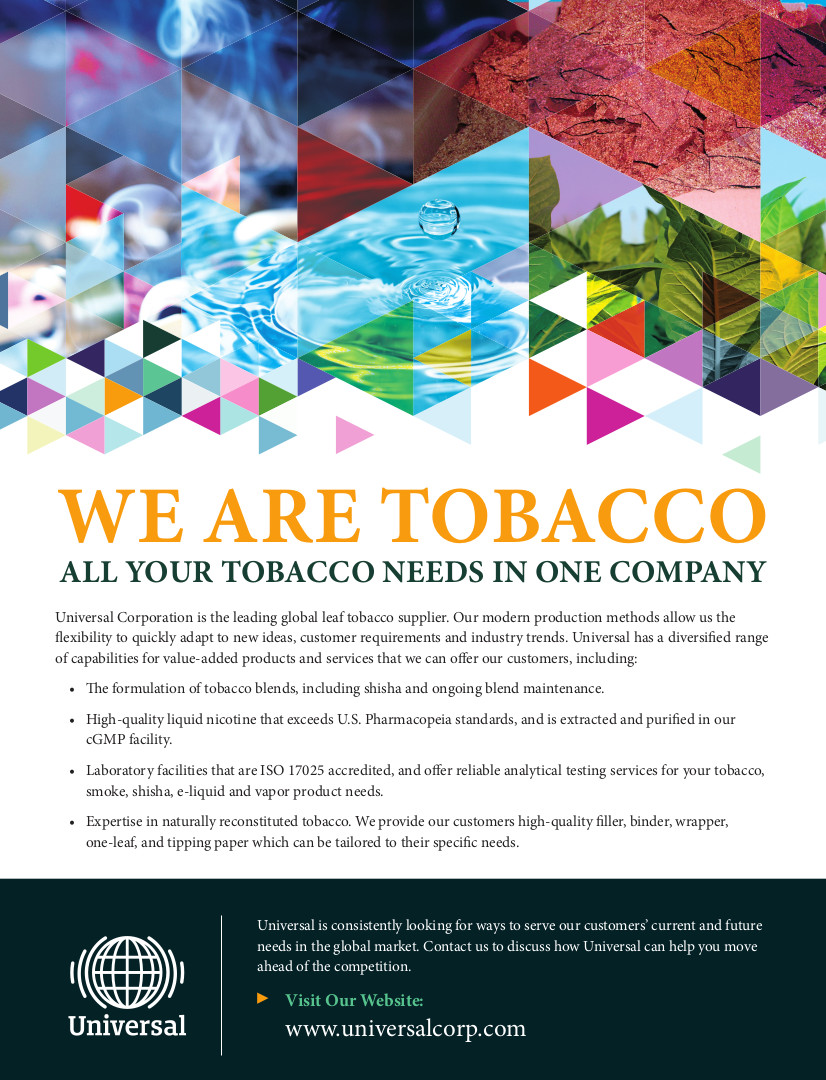Are the experiences with harm reduction from the past applicable to the future?
By George Gay
Knowledge Action Change (KAC), the U.K.-based public health agency, published in the middle of November what it described as a landmark report, The Right Side of History. According to a press note, the report “charts the history of tobacco harm reduction (THR) to date and considers the future of a strategy that can hasten the end of smoking and drastically reduce smoking-related death and disease worldwide.”
The Right Side of History is the third in what has been a biennial series of Global State of Tobacco Harm Reduction (GSTHR) reports, following No Fire, No Smoke in 2018 and Burning Issues in 2020. Alongside the biennial reports, GSTHR Briefing Papers and other publications, a free-to-access global database enabling users to explore tobacco harm reduction and safer nicotine product use on a country-by-country basis, is available, also under the GSTHR brand.
There can be no doubt that these publications and databases comprise a tremendous resource from an organization that boasts a dedicated—I would say passionate—team of experts with long experience in various fields of harm reduction research and application. This was the organization that, in 2014, launched the annual series of forums that brought together a wide range of people with interests in, but not limited to, nicotine—people who, importantly but unusually for such events, included consumers. Under the name Global Forum on Nicotine (GFN), these events have been held mainly in Warsaw, Poland, though, during the period of Covid-19, when face-to-face meetings, especially international meetings, were difficult to organize, the GFN was moved rapidly to a partly online format.
And there is a lot more to what KAC has achieved through the application of innovative ideas. For example, the following is from the report’s foreword: “As an organization, we also wanted to help expand research capacity and understanding in relation to the principles and delivery of tobacco harm reduction. To achieve this, we established the Tobacco Harm Reduction Scholarship Programme (THRSP), … funded by the FSFW [Foundation for a Smoke-Free World]. Scholars from across the world have worked on a wide range of topics, helping improve professional and community understanding, with outputs including articles published in peer-reviewed journals, the establishment of regional networks, podcasts and films. Graduates of the THRSP will play vital roles in the ongoing struggle to expand and improve THR.”
Losing Sight
I have long been an admirer of KAC, its people and what it has achieved in a relatively short space of time, so I hope that I will be forgiven for being critical about its latest undertaking—for saying that I believe the latest report is a step in the wrong direction: backwards, where history always leads. To me, the latest report suggests that we are in danger of losing sight of our objectives, that the consumers, who were once championed, have been pushed aside while academics, experts and journalists on either side of the THR debate engage in an unseemly slugfest of recriminations.
But, before I go any further, I should declare an interest, or a lack of interest, perhaps. I am on the side of history that thinks history is bunk and largely a drag on moving forward. I find it impossible to see how history can play a positive role in promoting a disruptive technology. You cannot move fast and break things if you are dragging behind you the weight of history and all its petty grievances, real and imagined.
The Right Side of History is, of course, a brilliant title because it plays to the idea that history is written by the victors and so stakes a claim for THR advocates to be the victors and therefore to have written the one true history. But if we are going to move forward, we must accept that others have different versions of history with which we might disagree but with which we might have to engage. More importantly, we need to focus on the fact that it is the consumers who must eventually be the victors.
Perhaps it is because it is constantly reminded of its past that the tobacco/nicotine industry seems to me to have an unhealthy obsession with history and, especially, U.S. history, which is often presented as being universally applicable. Start talking about addiction and you will be transported back a quarter of a century to the testimony of the heads of U.S. tobacco manufacturers. Start talking about tobacco prohibition and you will be referred back 100 years to failed U.S. efforts with alcohol. And in chapter one of The Right Side of History, those interested in disruptive technologies are taken back perhaps a thousand years to what indigenous Americans got up to with tobacco.
I am not qualified to judge such matters, but, knowing the author, I feel certain that the history of tobacco and nicotine as presented in the KAC report is excellent and will be of much interest to historians, but I cannot see what relevance the ancient beliefs of indigenous Americans have to do with what the report refers to as safer nicotine products (SNPs). I struggle even to understand what relevance descriptions of early iterations of SNPs have on disruptive technologies, though I would concede that it would be wise to take note of, and keep in mind, any instances where products caused a disturbance in the forcefield of disruptive technology, either because the technology went in the wrong direction or it handed ammunition to anti-THR activists.
It would be wise, but it probably wouldn’t happen because, as Georg Hegel pointed out, if we learn one thing from history, it is that we learn nothing from history.
Engaging Consumers
I get the feeling that we, the people involved in trying to nudge governmental policies in the direction of THR (as opposed to the technicians working on new products), have run out of ideas and come to accept that, as a number of famous people have been quoted as saying, history is “just one damned thing after another.” But this again runs against the grain of disruptive technology. It speaks to a determinism—a fatalism even; it suggests that it is time to throw in the towel and wait for events to overwhelm us.
I certainly worry that this is what is happening. The GSTHR-branded products are produced with the help of a grant from the FSFW, which is funded at arm’s length by Philip Morris International, though I should add that the GSTHR project and all its outputs are editorially independent of the foundation, under the terms of the grant agreement.
It is interesting to note here that the foundation also funds the Tobacco Transformation Index (TTI), the second biennial report of which was launched in September. That report presented details of the findings of two further years of research into the efforts made by the world’s 15 largest tobacco companies to reduce the harm caused by the consumption of their products. The 2022 TTI report evaluated the tobacco companies’ actions across six business functions, designated “categories,” and 35 underlying indicators that are said to cover “measures indicative of harm reduction …”
As I understand things, the TTI is supposed to harness analysts and investors to use their influence to encourage the 15 tobacco companies to beef up the transformation of their portfolios from high-risk products to low-risk products and thereby accelerate the reduction of harm caused by tobacco use. The idea is that investors can be harnessed in this way by ranking the tobacco companies on their relative progress or the lack thereof in transforming their portfolios. A system of Naming and Faming/Shaming.
But the way I see it is that the new KAC report and the second TTI report are so far from the consumer coalface, so far from real-world THR, as to be largely irrelevant. These reports are certainly not meant to engage with smokers. Few, I would assume, are likely to read the 130-page KAC report and even fewer the 140-page TTI report and its 80-page methodology.
Of course, it might be said with some justification that these reports are not meant for consumers but for the experts who know best and who are battling hard to make THR a reality around the world. But this seems to run foul of a principle recognised in the foreword to the KAC report: “nothing about us, without us.”
Success Stories
Surely there must be more direct and efficacious ways of using the important foundation funding. Perhaps it is time to recognize that one of the problems with the foundation is the word “World.” Perhaps those of us who support THR have to admit that we have bitten off more than we can chew in aiming for a world revolution.
What if, for the time being, we forget about the world, large swathes of which are under the anti-THR influence of the World Health Organization? What if, for the time being, we concentrate on a handful of countries that have already proved amenable to THR by helping their SNP industries to prosper? If we are right and THR can be achieved through encouraging the switch from high-risk products to SNPs, then the countries chosen will become exemplars for the rest of the world—health and economic success stories that cannot be ignored or brushed aside by the WHO.
Of course, it could be argued that these exemplars will arise anyway, even if the emphasis is on the whole world. Again, there is truth in this, but I would argue that we are talking about time here. Take the U.K.; it has been relatively successful in encouraging the switch from high-risk products to SNPs, but the progress could be much faster, perhaps with an injection of cash.
Anybody who attended the U.K. Vaping Industry Association’s conference in November could not, I think, have failed to have been impressed by the practical nature of some of the panel sessions at which compliance issues were discussed. It occurred to me, though, that some of these sessions would be even more helpful if, with the right level of funding, they were staged as stand-alone educational workshops.
I use the U.K. and compliance as examples, but there are other THR-progressive countries where other issues, such as the illegal trade, could probably use some help if they are to become exemplars.
But if such ideas are not seen as worthwhile or are unworkable under FSFW protocols, at least the next KAC report should turn to more practical matters by looking at the environmental impact of SNP use against that of smoking combustible cigarettes. It cannot be right that neither the KAC report nor the TTI report mentioned environmental matters in any meaningful way. Some SNPs, such as snus, probably have a very low environmental impact while vaping devices and heat-not-burn products probably have high impacts. Either way, we need to know, and we need to know whether the high-impact products can be improved. It is no good extending the lives of individuals by a few years if we are seriously polluting the world for everybody.
























